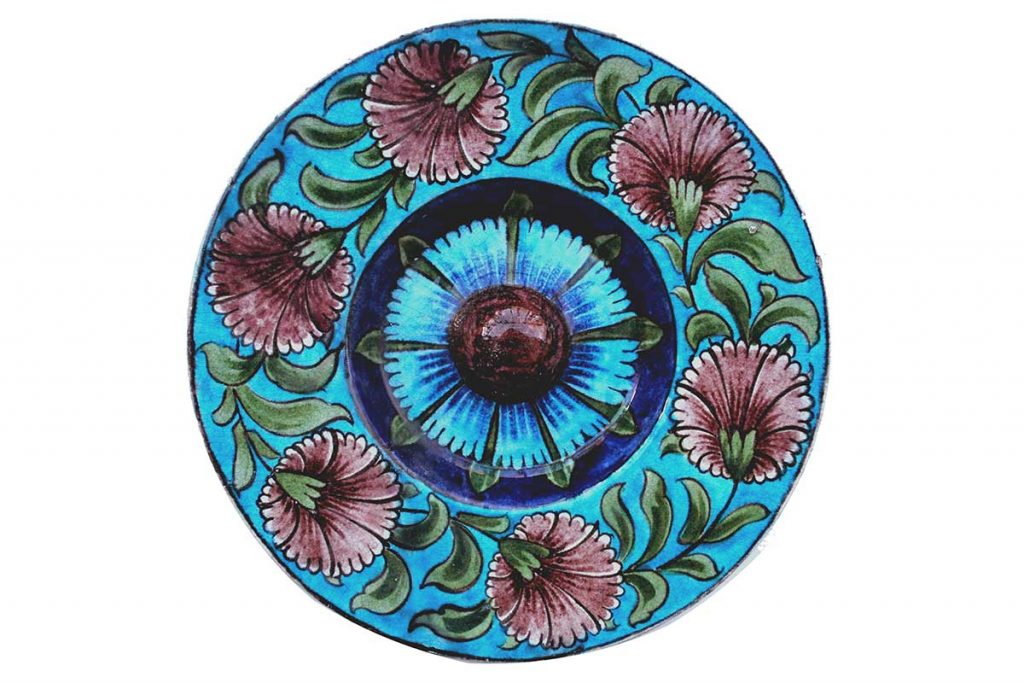
Visiting Sublime Symmetry at London’s Guildhall Art Gallery for New Scientist, 28 May 2018
William De Morgan was something of a liability. He once used a fireplace as a makeshift kiln and set fire to his rented London home. And as a businessman he was a disaster. The prices he charged for his tiles and ceramics hardly even paid for the materials, never mind his time.
At the turn of the 20th century, when serious financial problems loomed, only a man of De Morgan’s impractical stripe would resort to writing fiction. But the tactic paid off. No one remembers them these days, but the autobiographical Joseph Vance (1903) and subsequent novels were well regarded at the time, and hugely popular.
Sublime Symmetry at London’s Guildhall Art Gallery wants to tell the story of this polymathic artist but (like De Morgan himself, one suspects) it keeps disappearing down intellectual rabbit holes. De Morgan’s father was the freethinking mathematician Augustus De Morgan, whose student Francis Guthrie came up with the four-colour hypothesis (whereby designing a map, so that countries with a common boundary are differently shaded, requires only four colours). His whimsical tiled fire surround for his friend Charles Dodgson (Lewis Carroll) might have inspired that author’s nonsense verses. Other ceramic projects included the tiles on a dozen P&O liners. Ada Lovelace was a family friend.
On and on like this, until it dawns on you that none of this is an accident, the show’s endless rabbit holes are its point, and fashioning a man like William de Morgan – a mathematically inventive painter of pots, for heaven’s sake – would today be an impossibility.
With all our talk of STEAM and “Sci Art”, the sciences and the humanities are more isolated and defended against each other (“siloed” is the current term of art) than they ever were in De Morgan’s day. And the world itself, as a consequence, is a little less capable of sustaining wonder.
Fusion and freedom
Like Maurits Escher, half a century later, the ceramicist De Morgan drew inspiration from natural forms, and rendered them with a rigor learned from studying classical Arabic design. This fusion of the animate and the geometrical was best expressed on plates and bowls, the best of them made, not in a fireplace, but in the rather more sensible setting of Sand’s End Pottery in Fulham.
De Morgan’s skills as a draftsman were extraordinary. He could draw, free-hand, any pattern around a central line that would have perfect mirror symmetry. Becoming expert in lustreware, he painted his designs directly onto the ceramic surface of his pots and plates, manipulating his original sketches to fit every curve of an object.
It fits De Morgan’s somewhat disorganised reputation that lustreware should have become unfashionable by the end of the century, just as he perfected it.
Even now, it takes a few minutes’ wandering around the Guildhall Gallery for the visitor’s eye to accommodate itself to these objects: so very Victorian, so very hand-done and apparently quotidian. Make the time. This show is a gem, and De Morgan’s achievement is extraordinary. Among these tiles and pots and plates are some of the most natural and apparently effortless fusions of artistic proportion and mathematical rigor ever committed to any medium.
